Abstract
The behavior of Enterobacter aerogenes during growth in chemostats limited by single and double nutrient restrictions was examined. On the assumption that different essential nutrients act to limit growth in different ways, we selected pairs of nutrients likely to affect different aspects of metabolism. Results show that macromolecular cell composition can be controlled by using more than one nutrient restriction. The polysaccharide content of the cells is readily manipulated by the ratio of carbon to nitrogen in the inlet nutrients. Also, at low dilution rates, ratios of protein to ribonucleic acid are dependent on the ratio of phosphate to nitrogen in the input nutrients. An examination of both acetic acid and metabolite production (as measured by ultraviolet absorbance of culture filtrates) showed that accumulation of these products was dependent on both dilution rate and type of nutrient limitation(s). These results were examined in terms of the problems of translation of batch to continuous culture processes and the use of selected nutrient limitations to control noncellular product formation.
Full text
PDF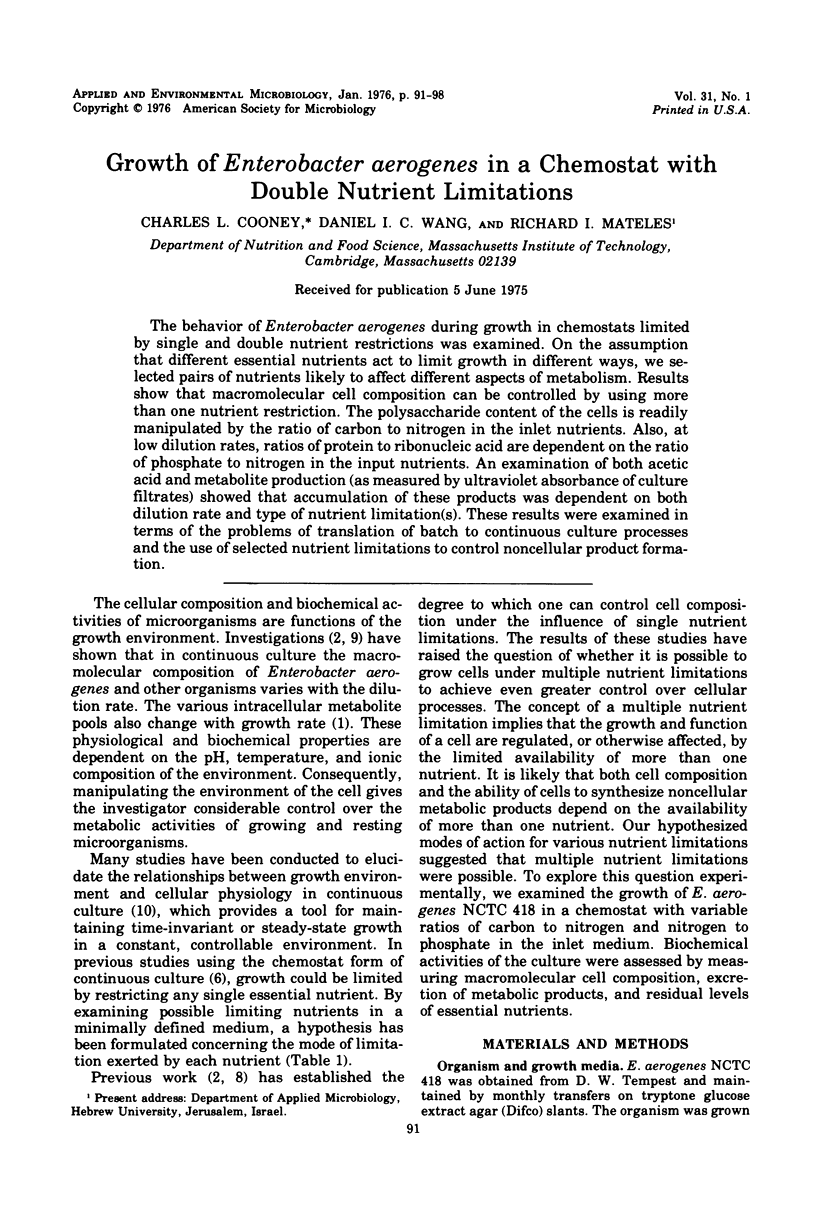


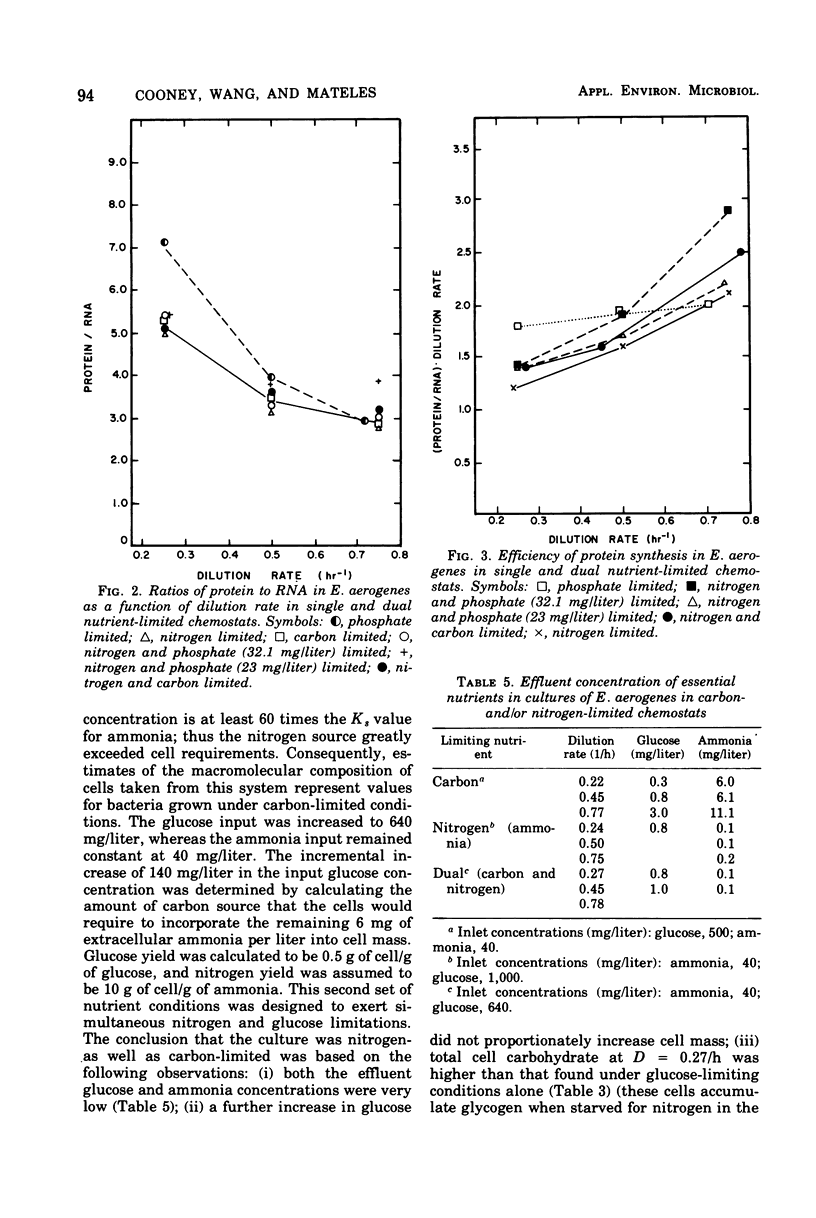
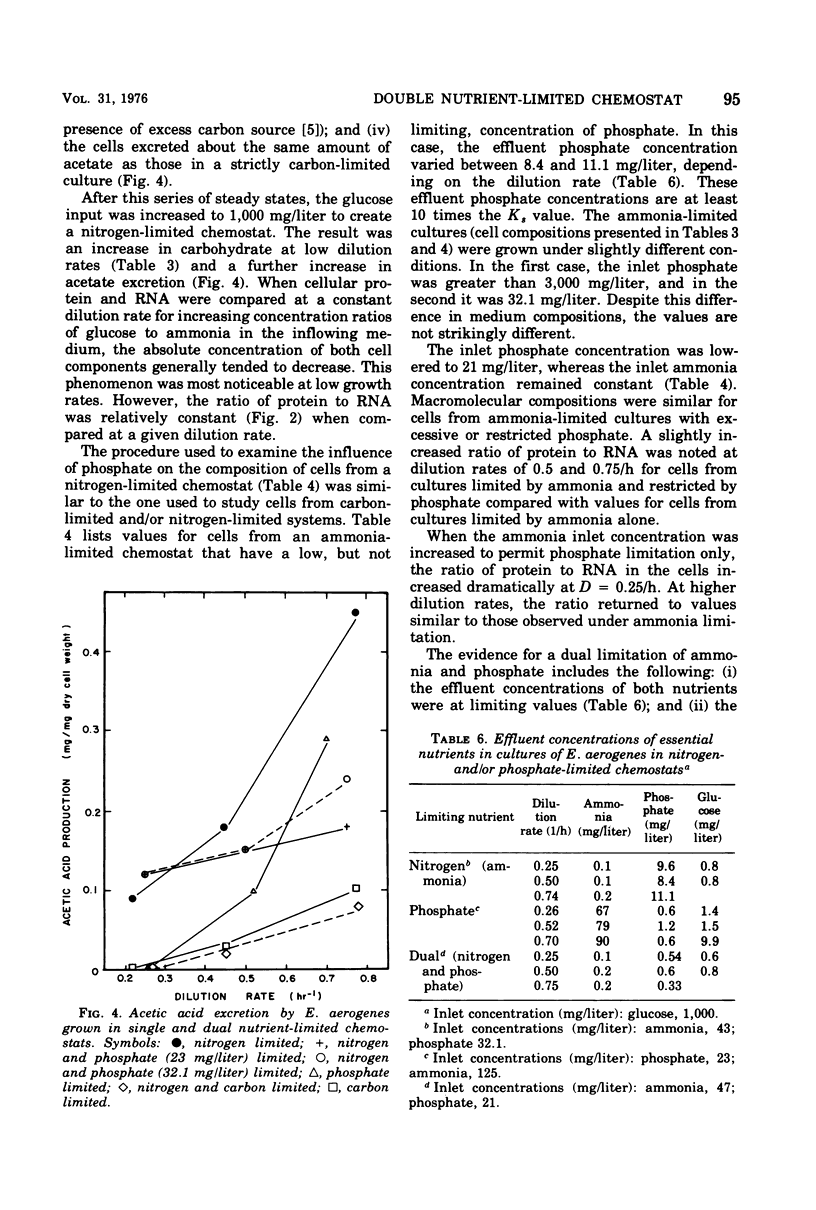
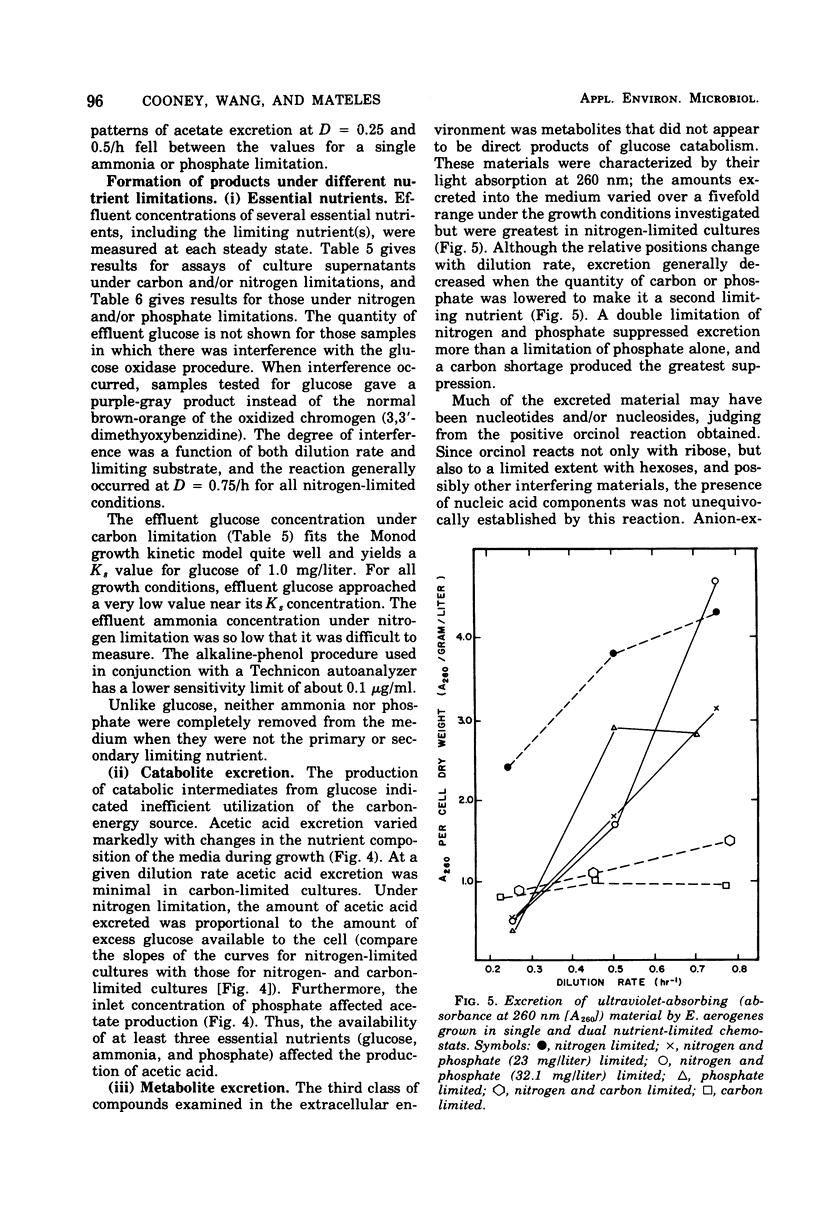
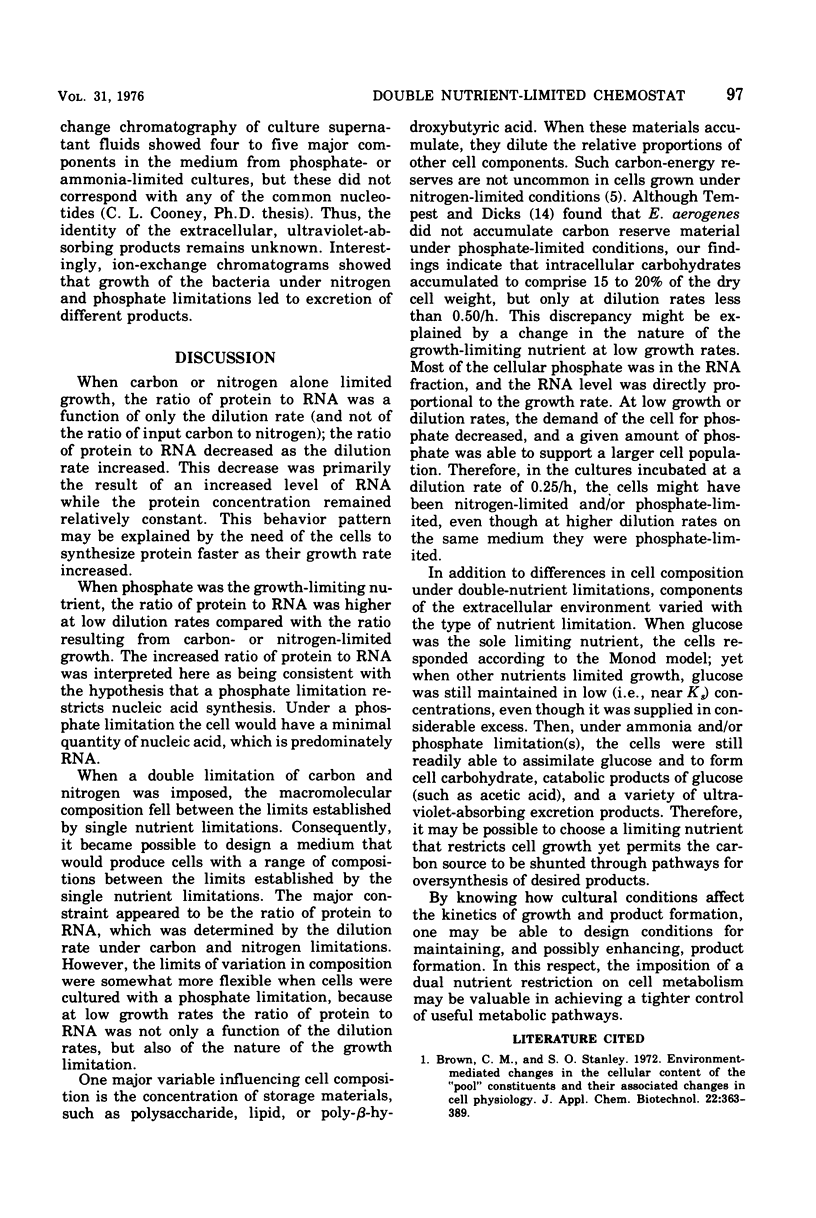
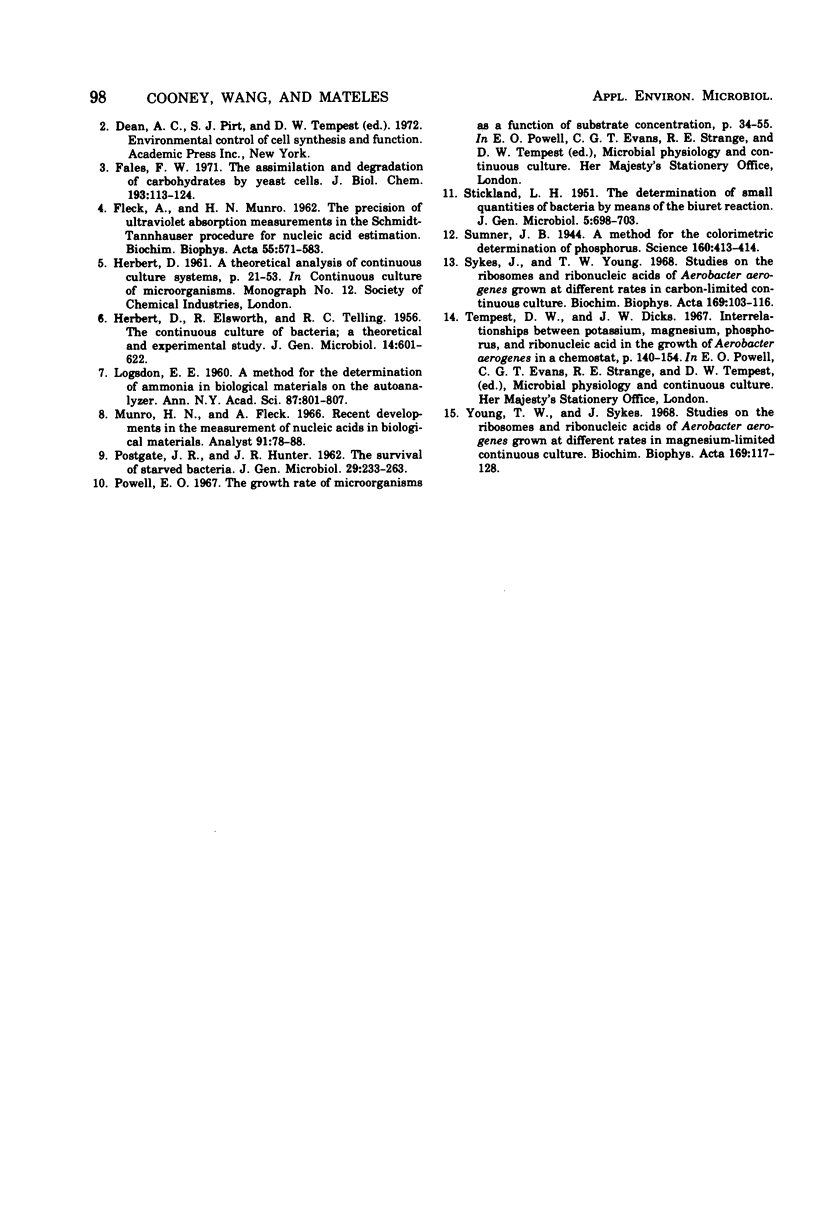
Selected References
These references are in PubMed. This may not be the complete list of references from this article.
- FALES F. W. The assimilation and degradation of carbohydrates by yeast cells. J Biol Chem. 1951 Nov;193(1):113–124. [PubMed] [Google Scholar]
- FLECK A., MUNRO H. N. The precision of ultraviolet absorption measurements in the Schmidt-Thannhauser procedure for nucleic acid estimation. Biochim Biophys Acta. 1962 May 14;55:571–583. doi: 10.1016/0006-3002(62)90836-3. [DOI] [PubMed] [Google Scholar]
- HERBERT D., ELSWORTH R., TELLING R. C. The continuous culture of bacteria; a theoretical and experimental study. J Gen Microbiol. 1956 Jul;14(3):601–622. doi: 10.1099/00221287-14-3-601. [DOI] [PubMed] [Google Scholar]
- LOGSDON E. E. A method for the determination of ammonia in biological materials on the autoanalyzer. Ann N Y Acad Sci. 1960 Jul 22;87:801–807. doi: 10.1111/j.1749-6632.1960.tb23237.x. [DOI] [PubMed] [Google Scholar]
- Munro H. N., Fleck A. Recent developments in the measurement of nucleic acids in biological materials. A supplementary review. Analyst. 1966 Feb;91(79):78–88. doi: 10.1039/an9669100078. [DOI] [PubMed] [Google Scholar]
- POSTGATE J. R., HUNTER J. R. The survival of starved bacteria. J Gen Microbiol. 1962 Oct;29:233–263. doi: 10.1099/00221287-29-2-233. [DOI] [PubMed] [Google Scholar]
- STICKLAND L. H. The determination of small quantities of bacteria by means of the biuret reaction. J Gen Microbiol. 1951 Oct;5(4):698–703. doi: 10.1099/00221287-5-4-698. [DOI] [PubMed] [Google Scholar]
- Sumner J. B. A METHOD FOR THE COLORIMETRIC DETERMINATION OF PHOSPHORUS. Science. 1944 Nov 3;100(2601):413–414. doi: 10.1126/science.100.2601.413. [DOI] [PubMed] [Google Scholar]
- Sykes J., Young T. W. Studies on the ribosomes and ribonucleic acids of Aerobacter aerogenes gron at different rates in carbon-limited continuous culture. Biochim Biophys Acta. 1968 Nov 20;169(1):103–116. doi: 10.1016/0005-2787(68)90012-9. [DOI] [PubMed] [Google Scholar]
- Young T. W., Sykes J. Studies on the ribosomes and ribonulceic acids of Aerobacter aerogenes grown at different rates in magnesium-limited continuous culture. Biochim Biophys Acta. 1968 Nov 20;169(1):117–128. doi: 10.1016/0005-2787(68)90013-0. [DOI] [PubMed] [Google Scholar]


